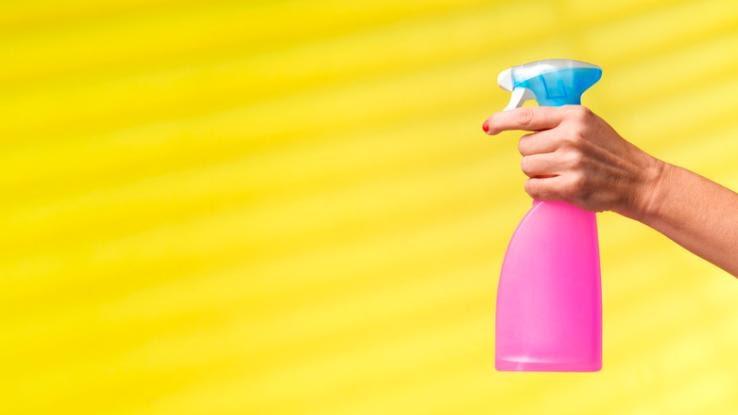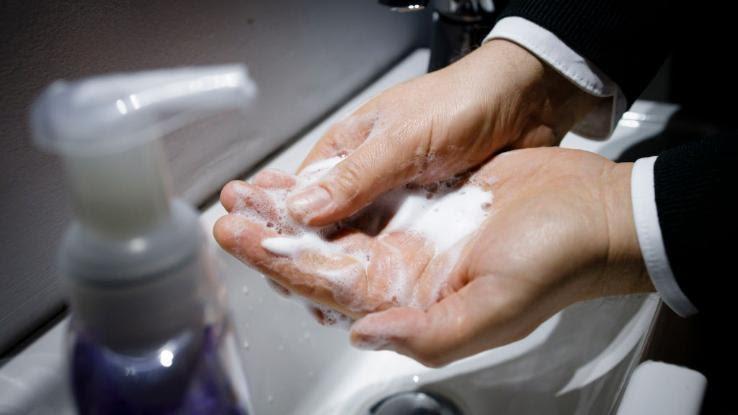
There are plenty of cleaning products out there, but which ones work best isn’t always apparent, especially when it comes to fighting germs. Fortunately, the Environmental Protection Agency (EPA) maintains detailed lists of disinfectants and the uses they’ve been approved for. The organization even maintains a webpage for disinfectants that have been shown to potentially kill the coronavirus.
While the EPA’s resources are helpful, the sheer amount of information they present can be confusing. To understand how to navigate the EPA’s list of approved disinfectants, there are a few things you should know about how the EPA rates disinfectants and what that information means.
How the EPA Approves Disinfectants
Because the EPA wants to ensure that every disinfectant it approves is safe and effective, making it onto one of the agency’s lists is a lengthy process that can sometimes take a year or longer. When a product is sent in for approval, the EPA first looks at how the disinfectant is intended to be used and on what surfaces; the ingredients; the frequently with which it can or should be used; and how it’s stored and disposed of. The agency also takes into account any potentially harmful effects the product could have on humans, animals or the environment.

The manufacturer must supply evidence of the product’s safety in the form of documented studies that follow EPA testing guidelines. The EPA also evaluates the language that will appear on the product’s label to ensure that it includes proper directions for use, safety regulations and information about any potential risks.
How to Look Up Disinfectants
You can access the EPA’s lists of approved disinfectants by visiting a subsection of the agency’s pesticide registration page. Disinfectants are sorted into different lists based on what they’re effective against, such as tuberculosis, medical waste treatment, ebola and more, with each list associated with a letter (List A, List B, List C, etc.) In most cases, all you need to access a list is a PDF reader. In most cases, the link will be right at the bottom of the page. Click it, and you’ll automatically download the PDF.

List N, an online database of disinfectants proven to work against the coronavirus, is a special case. Rather than scrolling through a PDF, you can search by name, company, product and more, with dropdown options that display all possible search terms to make your hunt easy. And if the interactive format is too daunting, there’s even a stripped-down version of the database that you can search as well.
Pet-Friendly Disinfectants
If you have pets in your house, the EPA’s resources can be particularly useful. The agency approves disinfectants for use around animals as well as humans, so if you’re worried about the effects a cleaner could have on pets, the organization’s website is the first place you should check.

One example of a particularly bio-friendly disinfectant approved by the FDA is Envirocleanse A. It’s organic, biodegradable and proven to be effective at killing all sorts of pathogens (including the coronavirus), and best of all, it’s completely non-toxic to humans and pets alike. You might also consider Stepan Veterinarian Type Disinfectant, which is commonly used in animal care facilities and hospitals, kennels and more. Not only does it act as a detergent, deodorant and cleaner, but it also kills a vast range of both human and animal viruses.
If you’re worried about cleaning supplies beyond just disinfectants that could prove toxic to cats, dogs and other pets, the EPA has you covered there as well. The Safer Choice Standard list includes numerous products that have been shown to be safer for pets, the environment and more than many competing products.
Hand Disinfectants — or the Lack Thereof
While there is an extensive EPA list of approved disinfectants for surfaces, the agency takes a very different approach to hand soaps and disinfectant hand wipes. Although you might expect them to provide an extensive list of the best antibacterial hand soaps, you won’t find such a list on the EPA site. That’s because such hand soaps haven’t proven themselves to be noticeably more effective than traditional hand soaps.

“There is currently no evidence that consumer antiseptic wash products (also known as antibacterial soaps) are any more effective at preventing illness than washing with plain soap and water,” reads a statement on the EPA website. “In fact, some data suggests that antibacterial ingredients could do more harm than good in the long-term and more research is needed.” That’s in part because antibacterial soaps help bacteria gain resistance to antibacterial substances over time. Rather than worrying about which soap you’re washing your hands with, the important thing is to just wash them with soap and hot water.
Industrial Disinfectants
The EPA also regulates the use of cleaning supplies in an industrial setting. Because of this, you can find information about many cleaning supplies that probably won’t find much use in your average home but prove invaluable in factories or large institutions. For example, Mason Chemical Company’s Masqat line of products do everything from fighting sulfate-reducing bacteria, which can cause problems in the oil and natural gas industries, to large-scale floor sanitization in the dairy, food and beverage processing industries.

There are also some industrial cleaners that you may be more familiar with. Sherman Williams’ Spray Nine, for instance, can be used to clean vinyl and fiberglass, remove smoke stains, clean and control mold or mildew and more, and it’s possible you even have a personal use-sized container in your own home. Similarly, Clorox Clean-Up Cleaner + Bleach, which can kill 99.9% of viruses and bacteria, is approved for use in a hospital or institutional setting.
Resource Links
https://www.epa.gov/pesticide-registration/selected-epa-registered-disinfectants
https://cfpub.epa.gov/giwiz/disinfectants/index.cfm
https://www.epa.gov/saferchoice/products
https://www.fda.gov/drugs/information-drug-class/qa-consumers-hand-sanitizers-and-covid-19
https://www.pilotchemical.com/productcategory/maquat/
https://www.sherwin-williams.com/homeowners/products/spray-nine-multipurpose-cleaner-disinfectant





